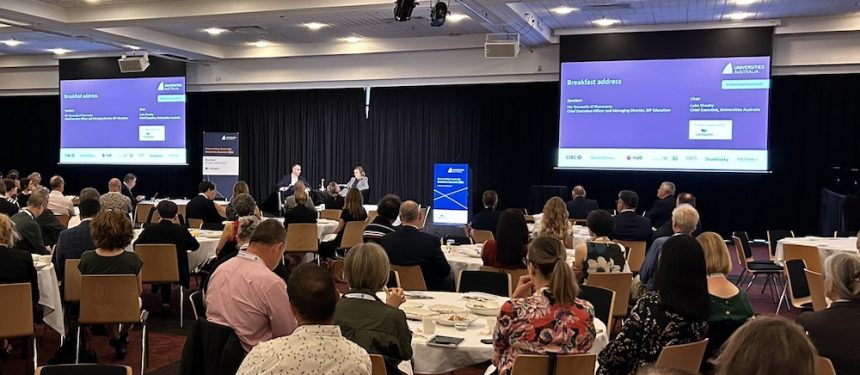Tennealle O’Shannessy was quizzed at an IDP breakfast briefing on what needs to happen for Australia to get back on track with attracting international students considering the government’s latest measures put in place amid the migration strategy.
She told delegates at the UA Solutions Summit that education providers and agents are working under “established GTE frameworks”. Much “uncertainty” has been created due to the shift in visa acceptance rates and processing times, she said.
“If there is going to be change in evidence requirements, and if there’s going to be a change in how we are thinking about particular source markets, then let’s just be transparent about that and communicate it.
“Providing transparency and communicating what those requirements are gives these students the opportunity to think through all of their decision making – rather than the situation in which they find themselves now, deep into a 12-to-18-month period working through their journey towards international study, having been refused almost at the last hurdle on what are pretty subjective grounds,”O’Shannessy urged.
It comes as there was an announcement that the Genuine Temporary Entrant requirements will be changing and there will be a new Genuine Student Test, but little information has been given by the government about what exactly the new requirements entail.
Stakeholders have already been indicating that approval rates for visas are becoming increasingly slow, as well as being at the lowest level since 2011.
She also urged the federal government to continue to create a safe environment that is welcoming and “focused on wellbeing”, as well as continuing to work on delivering policy around measured employment outcomes.
“Opportunity to access job experience as well as education experience sets us up to be the destination choice over the next 20 years.
“I’m excited about what we can achieve, [but] there are definitely things we can work on,” she noted.
Despite the issues that are affecting the Australian market as a result of new measures, almost 65% of international students surveyed by IDP were aware of the “uncertain policy” landscape in Australia.
“I think this showcases the strength of Australia’s ecosystem and the work that our providers do, that agents do, and that Austrade does to get the message out there.
“Almost a third of prospective students are reconsidering their options in terms of their preferred destinations – but demand for Australia does remain strong,” O’Shannessy argued.
Cost of living, it was found by the survey, was having more of an impact on students than any kind of policy upheaval, the survey also found.
“Providing transparency… gives these students the opportunity to think through all of their decision making”
O’Shaughnessy also told delegates that, to a certain extent, international education doesn’t necessarily conform to economic cycles – especially in China, one of its key source markets.
“Where we do see slowdowns in source markets, there’s a great desire to move into international education.
“It does make sense in that there isn’t that opportunity cost around being able to secure a good job in-country, so students do tend to look for how international education can set them up for the next five years.
“Barring a significant crash in the [Chinese] economy, a slowdown is actually really positive for our sector, because it gives us the opportunity to talk about the value that can be bought by investing a couple of years in international education,” she explained.
India was also mentioned during the briefing, with O’Shannessy stressing the “phenomenal” connection that the country has with Australia.
While there have been concessions made for some Indian students amid the new measures, due to the terms of a free trade agreement at the end of 2022, the AAERI made a petition citing concerns about “unfair” visa regulations.
She said “continuing discussions” were being had around visa regulations and acceptance rates in India’s context, but that “we will continue to see strength in that market”.




